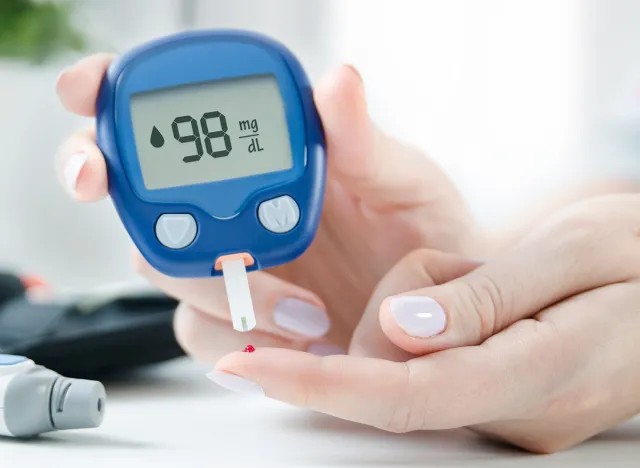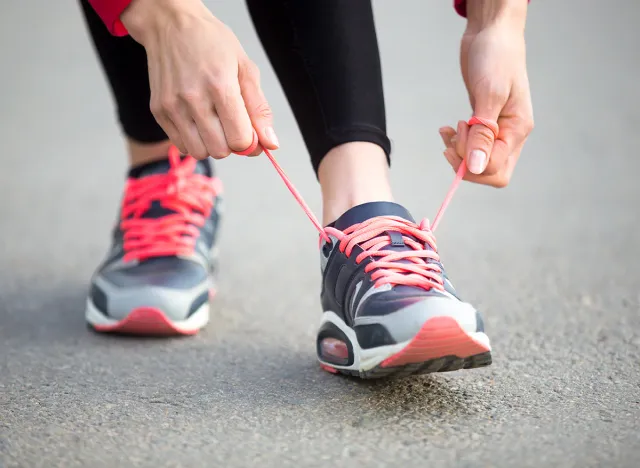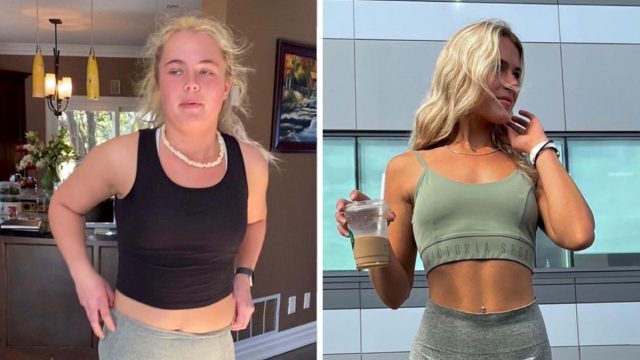I Lost 40 Pounds Just by Walking Here's How You Can Do It, Too
Online fitness coach Alexandra (@alexx.fitt) has amassed a following on TikTok by sharing videos about how she lost 40 pounds. In one of her viral clips, she reveals that her weight loss was primarily the result of a single exercise. "I lost 40 pounds just by walking, and here's how I did it", she said, "what you're going to do to start losing weight by walking." She went on to offer a few tips on how to maximize the burn.
First, Start Small
@alexx.fitt Step by step walk it off #walking #weightloss ♬ original sound – alexx.fitt
"Number one, don't start big. You don't have to go on a two hour walk every single day," says Alexandra.
Take Shorter Walks Before or After Breakfast and Lunch

Alexandra explains that she started by taking short walks after every meal. "I would go on a 10, 15 minute walk after my big meals," she explains. "So usually my first walk would be in the morning, like 10 minutes before breakfast. I would eat breakfast, go about my day, and then during lunch," she continues. "If you're at school, at work, I know you're able to get outside and get your body moving."
Related: Woman Wows With Her Flat Stomach After Losing 30 Pounds by Walking
Take a Longer Walk After Dinner

Then, Alexandra would take a walk at the end of the day, after her meal. "This helps your food digest, it helps get rid of bloating, everything," she says, explaining that "usually after dinner" she would take her "longer walk," which would be " a 30 minute walk."
Aim for 10,000 Steps a Day

In total, Alexandra tries to aim for "10,000 steps" per day, she says.
According to Research, Walking Right After a Meal May Lower Your Blood Sugar

Should you walk before or after meals? According to research, waiting until after your meal is more effective. A 2022 study published in the journal Sports Medicine found that walking as little as two to five minutes after a meal may lower your blood sugar.
Related: 6 Effective Ways to Get Fit if You Have Chronic Health Issues
It Can Also Reduce Your Chances of Heart Disease

Another study found that doing small quick exercises – including a 10 to 15-minute walk –after meals may be more beneficial to reducing chances of heart disease than one long workout.
Related: Woman Wows With Her Flat Stomach After Losing 30 Pounds by Walking
You Should Go Right After You Eat

Chris McMahon, a nutrition and fitness coach also encourages taking a few smaller walks throughout the day instead of one long walk, as it is easier to squeeze into your schedule. "A 10 minute walk is equal to a thousand steps. So if you think of it that way, it's like, "Oh, okay, I can take short little walk breaks," he says.
💪🔥Body Booster: Consider taking brief walks after every meal instead of one long walk, as you might reap more health benefits.





